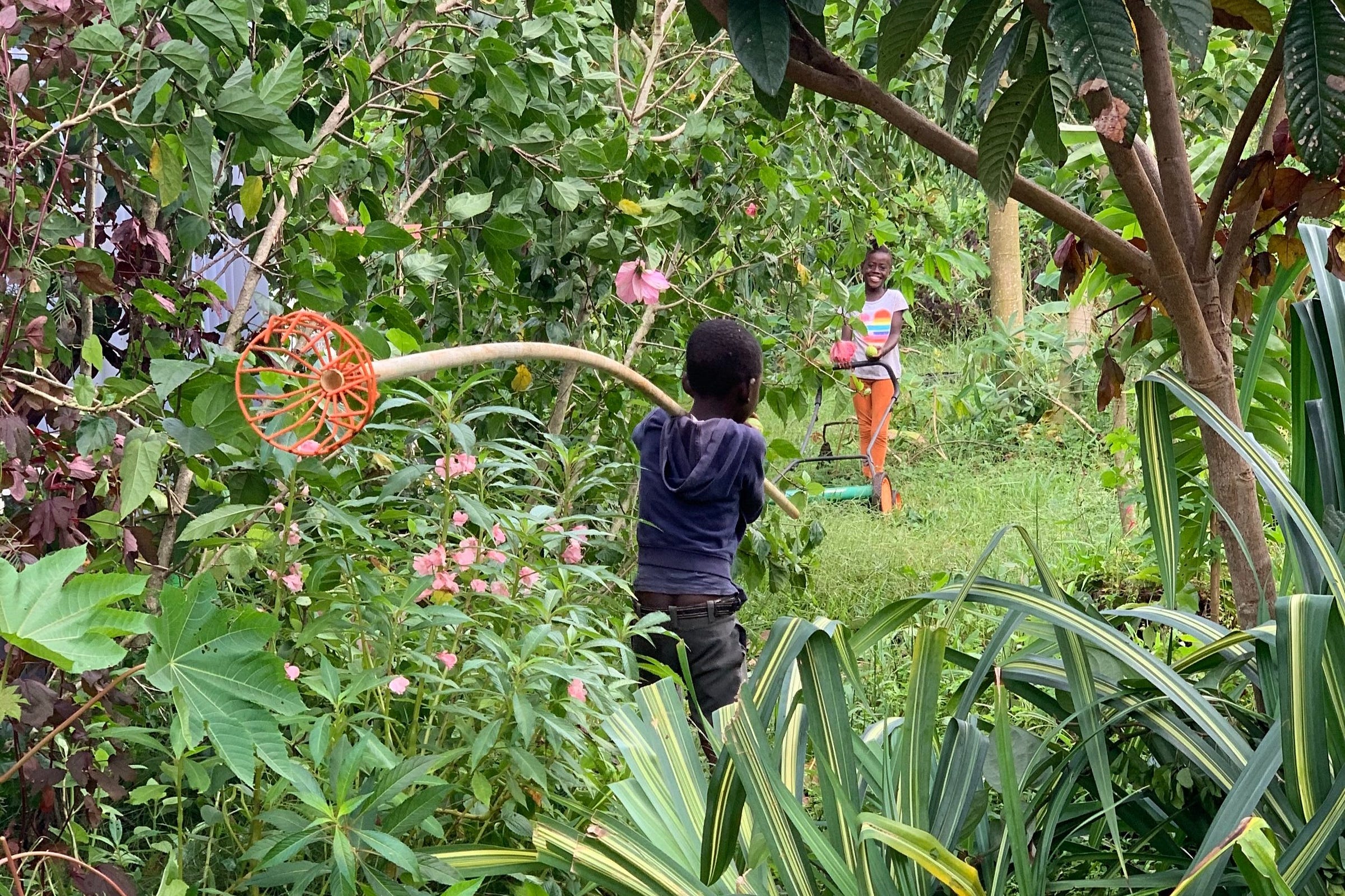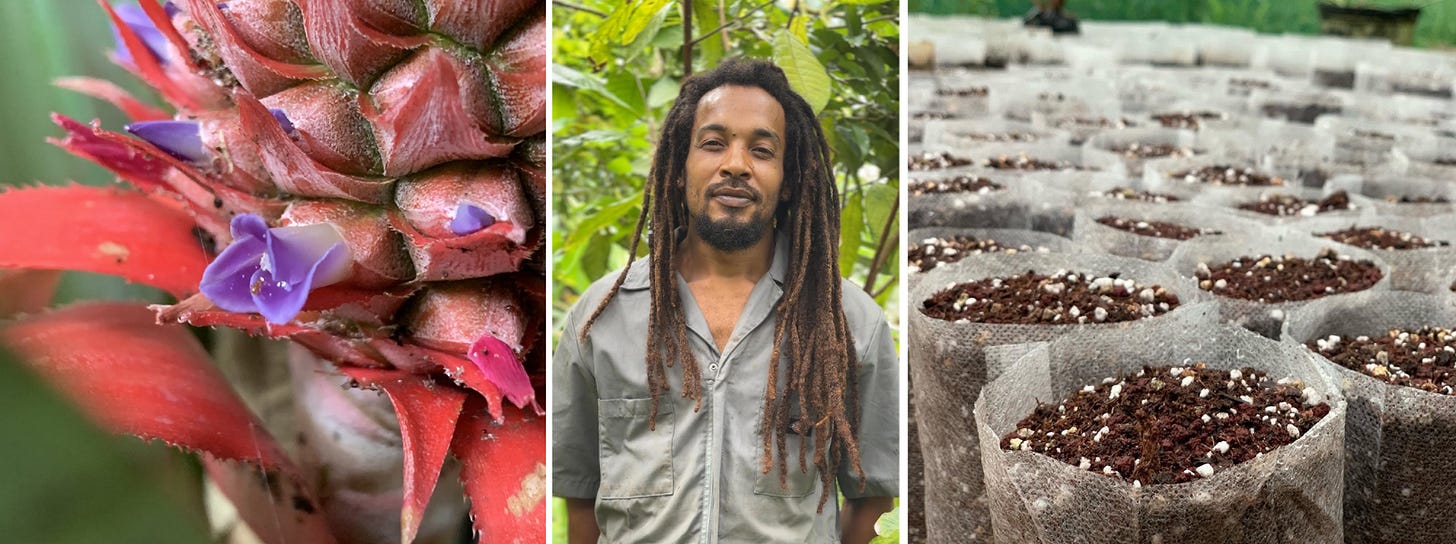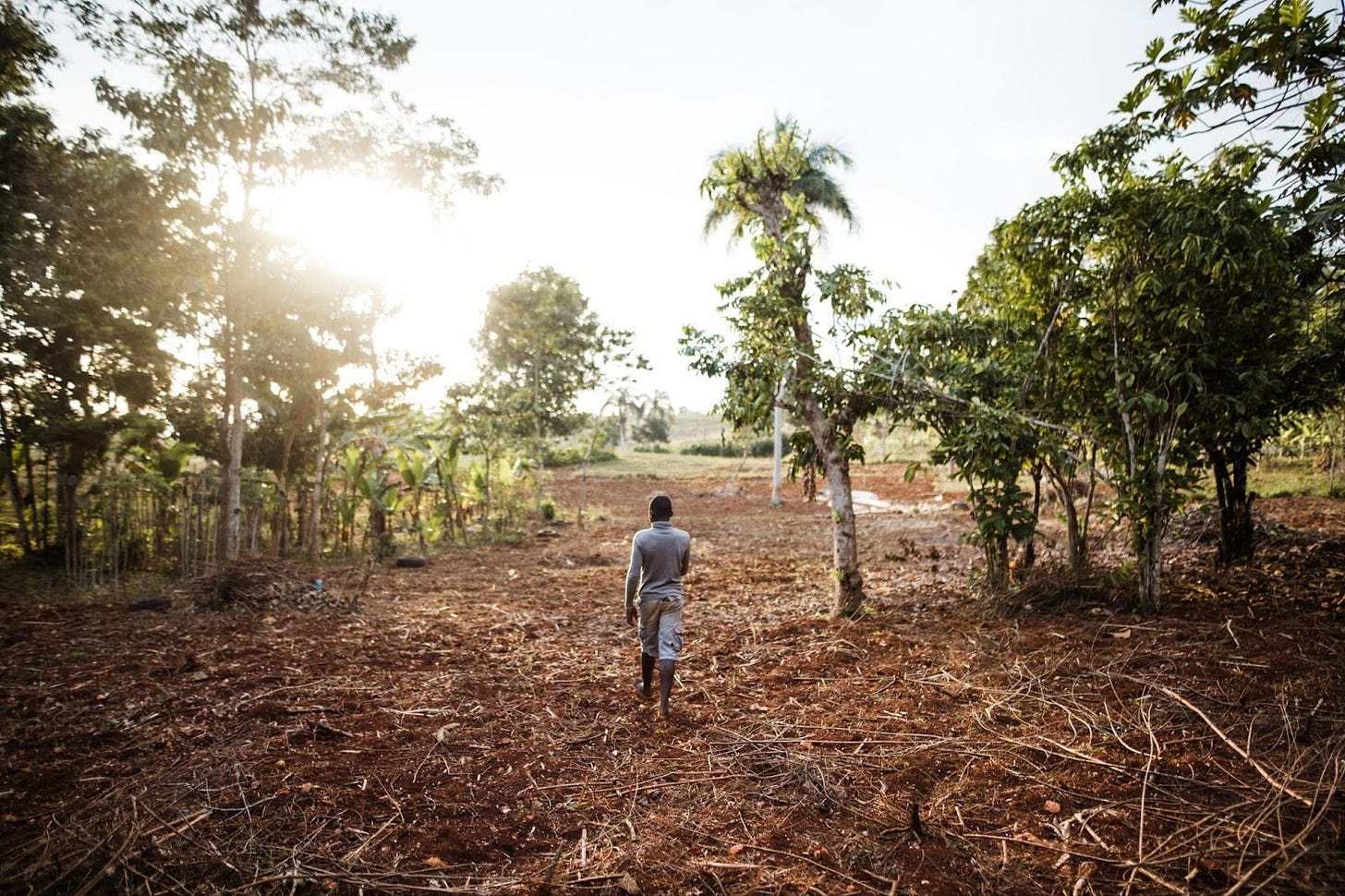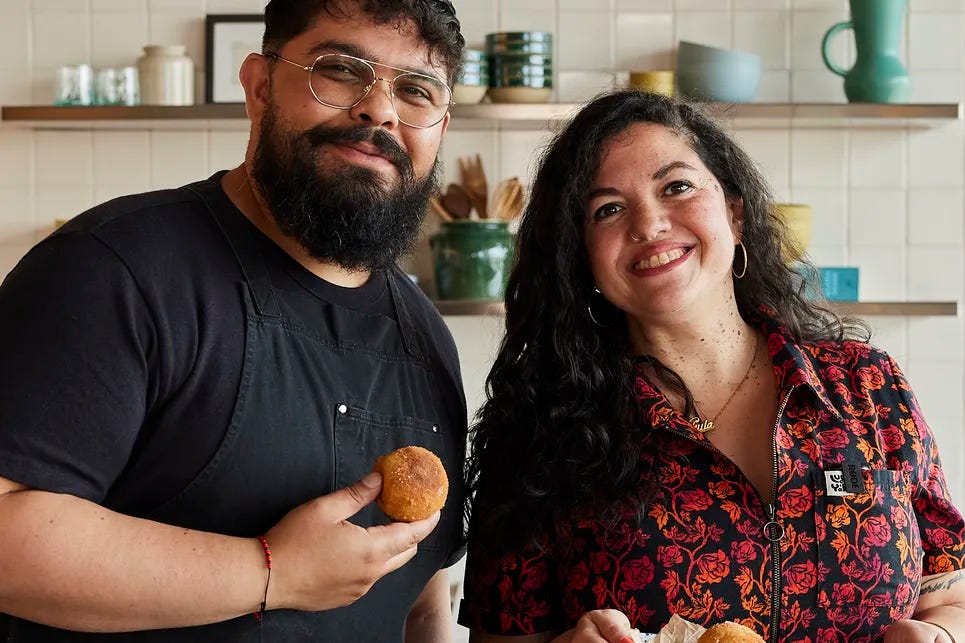Regeneration and Renewal in Haiti
How one person is preserving the Caribbean island’s lush flora and fauna
Del escritorio de Von:
Mi gente, I’m finally home for a bit after four months of book tour. It’s been remarkable, inspiring, and generative. And an important reminder that my work is fundamentally about people. This week, we’re revisiting Sidney-Max Etienne—one of the many islanders who contributed to my research for Islas. Through him, I came to understand the complexities of that island, and the challenges they face navigating an uncertain political and climate future. This post was written by Islas and La Piña contributor Sophia Ramirez.
De corazón,
Von
Checking in with Sidney-Max Etienne, Founder of Grown In Haiti
“Whatever may or may not unfold, if I’m judging the future by what I’m seeing around me… it looks abundant and green.”
Sidney-Max Etienne joins our video call against a backdrop of lush greenery and echoing birdcalls. The last time we spoke (in 2021 at the height of the pandemic), Grown in Haiti (GIH) consisted of a living classroom for regenerative agriculture courses, and had just started building a community center. Neighborhood kids set up shop there on vacation days, snacking on fallen fruit from the newly reforested area.
The organization has since expanded to include an annex and a seed library. The replanted trees have now grown to stretch past the roof. And the organization provides internet access for the community via Starlink, turning the GIH campus into an education hub as well as a sustainable food source.
“There’s been a lot of growth. Figuratively and literally,” Sidney-Max said, laughing.
When he founded GIH in 2014, Sidney-Max envisioned a smaller scope for the organization. It was initially a solo endeavor, a homecoming after growing up in New York City. After a few years of documenting his reforestation efforts and the flora on the island, Sidney-Max had cultivated an online following. But his neighbors, weary of NGOs investing in short-term projects and making a swift exit, showed little interest.
“No matter how many trees I planted - until somebody decided to take care of that tree [after me], there was going to be no longevity,” Sidney-Max said.
Inspired, he started designing workshops on reforestation and sustainable food systems and created a gathering place, all while building the community’s trust.
Now in its tenth year, GIH has more at stake than the founder’s dream of planting. Bit by bit, Sidney-Max’s neighbors have come to embrace his vision, investing their time and effort back into the organization. Since we last spoke, GIH has trained 23 additional “AgriNatif” team members—a term used combining the words “Agriculture” and “Native”—a crew of self-sufficient environmental stewards equipped to apply regenerative practices to their land.
“When I first came here, I was all about the trees, right? Head in the soil, like an ostrich in one of those old cartoons. But what I learned is that without community, there is no real growth, no real resilience,” he said.
Of late, resilience has been top-of-mind for Sidney-Max as his work has shifted due to the conflict in the Haitian capital of Port-au-Prince and the effects of climate change have presented the organization with new challenges. Additionally, food insecurity remains a pressing concern throughout Haiti, with 4 million people affected. But much like during the COVID-19 pandemic, the shared challenges have united the community and increased their interest in self-sufficiency.
“People are focusing more on what they do have and what they’re in control of,” Sidney-Max noted. “Most people cannot get their products in Port-au-Prince anymore. It’s become a lot more localized and there’s a lot more exchange going on. Yes, certain things have become more challenging, but the community has gotten tighter.”
He addresses the effects of climate change—changing weather patterns, certain crops dying off—with a similar brand of resigned optimism, pointing to his belief that a crisis can also be a catalyst for growth and innovation.
“Climate change is happening. [Grown in Haiti] can learn with these changes, learn how to live with them and cope,” Sidney-Max said. “We need to have more in the ground than we can imagine, than we can even handle, so that there is an excess of abundance.”
Over the next few years, he hopes to spend more time experimenting and innovating and testing different regenerative agricultural techniques to discover what will thrive in a changing environment. A diverse ecosystem will be key to GIH and the community.
Learn more about Grown in Haiti in Islas, and follow their progress @growninhaiti. You can also Adopt a Tree or donate directly to their scholarship program and workshops on regenerative agroforestry.
Islas is Saveur’s Cookbook Club Pick!
Thanks to Jess Carbone and the Saveur team for choosing Islas for their most recent #SaveurCookbookClub—a community of people that dig deep into cookbooks and share their progress online! They shared my recipes for Ensaladong Talong, a flavorful grilled eggplant salad from the Philippines, and Puerto Rican Mofongo with Shrimp and Lemongrass Stock.
Learn more and join the club here.
Where I’ll be
Save the dates!
Thursday, September 19 · 6:00 PM EST - Essex Market, NY
Cooking demo and book-signing at Essex Market, Lower East Side, NY.
November 6-8 - World of Flavors Conference and Fest, Napa Valley, CA
Cooking demos and conversations at the Culinary Institute of America’s 26th annual World of Flavors Conference & Festival, Napa Valley, CA.
Writer: Sophia Ramirez | Editors: Von Diaz and KC Hysmith
Un Poquito Mas …
My recipe for Papas Rellenas stuffed with picadillo are featured over on Food52! I met up with my friend César Pérez in the Food52 Test Kitchen to share the secrets to making this dish from Islas.
Did you like this latest post of La Piña? Think someone else might like it, too? Please consider sending it to a friend or sign them up for a paid monthly gift subscription!









